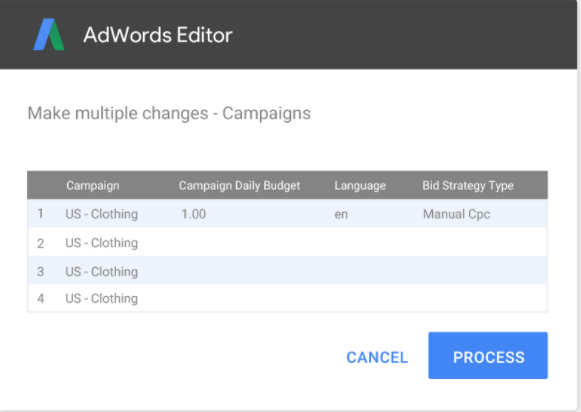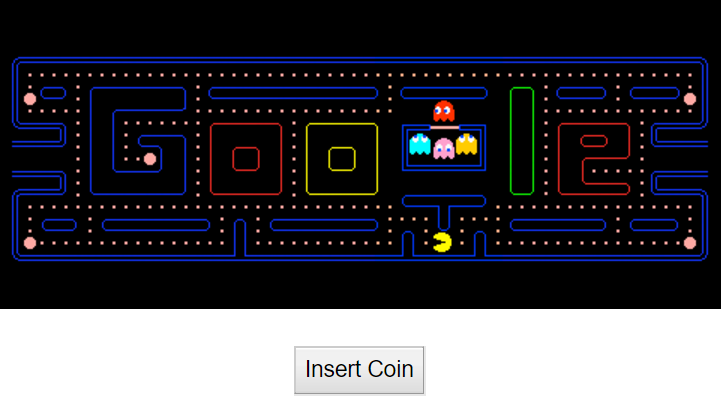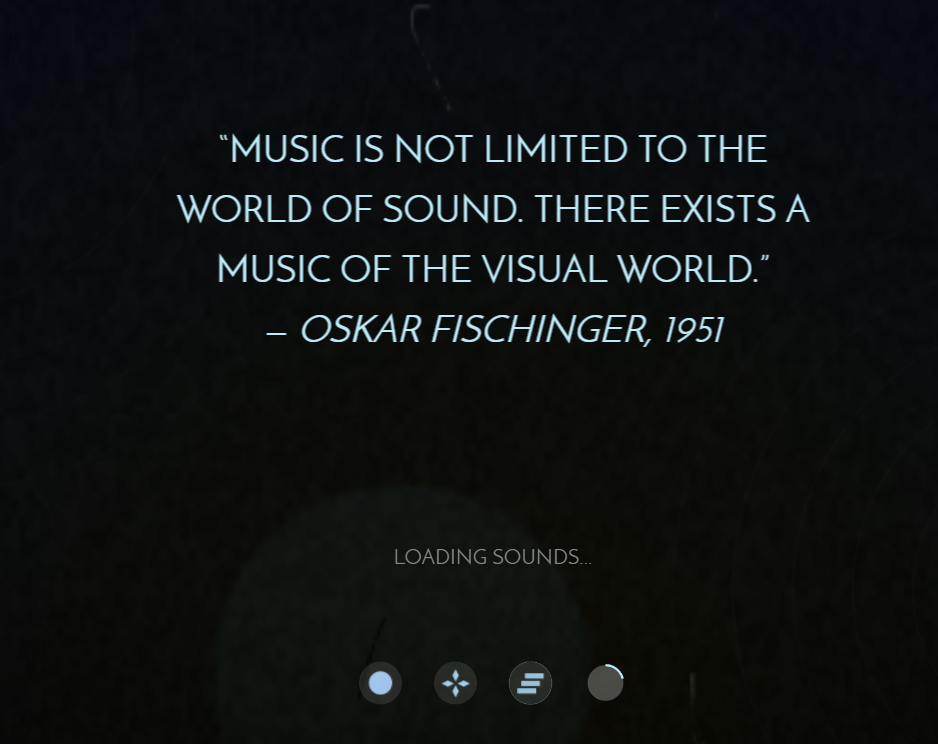Posted by Alex-T
After storing this idea in mothballs for quite a while, I finally decided to conduct an analytical study that would breakdown the most popular industries in the US based on the number of monthly online visitors. Special thanks to the SimilarWeb team, who helped me with the convoluted process of assembling data on the industry traffic distribution across 1,000 top-visited US domains.
The purpose of this research isn’t just to share some general trends and observations that will leave you thinking, “Sounds interesting, but what’s next?” I’ve also included a bunch of actionable ideas based off of the data I went over myself.
For those of you wondering whether it’s worth it to read this article in its entirety, below are the key findings:
- Google, Facebook, YouTube, Yahoo, and Amazon own 32.34% of the total US traffic market. These five online giants decide which sites we’re going to visit next and what ads we see.
- The top five industries in the US are Internet and Telecom, Arts and Entertainment, News and Media, Shopping, and Adult Entertainment. Altogether, these businesses control 82.55% of the US market share.
- In the Internet and Telecom Category, search engines and social network sites get up to 95% of the traffic share.
- Google, Yahoo, and Bing are the most visited search engine sites in the US However, that doesn’t necessarily mean that people use Yahoo as a search engine.
- Wikipedia.org has over 4.7 billion monthly users, with 86% of those users coming from organic search. Wikipedia is known to be a traffic-generating site.
- In the Shopping category, 74% of market traffic is split between Amazon (51.24%) and eBay (22.01%).
- YouTube promotes the Gambling industry more than any other.
- In the Business sector, industries like Marketing, Advertising, and E-commerce have the smallest share compared to other subcategories.
- The tourism industry is extremely competitive; however, it has a diverse range of small- and medium-sized players, since the top domains occupy only 17% of the total market share.
82.55% of all US online traffic is shared among five industries
Over 80% of all US online surfers are divided among five industries, while the rest of the traffic (15%) is spread across more than 15 other niches. Among the top five leaders are Internet Telecom (45.9%), Arts and Entertainment (12.35%), News and Media (9.35%), Shopping, and the Adult industry.
I expected to see the Shopping industry at the top of the list with a much higher percentage of traffic, but it may not have made it to the top three because SimilarWeb defines YouTube as part of the Arts and Entertainment industry, which drives over 36% of traffic in this category.
The Reference category is represented mostly by Wikipedia with 1.32% of all US traffic. I can see how one day Wikipedia may be acquired by either Google or Facebook, jacking up their traffic and sales. Currently, Wikipedia is still a non-profit organization, and hopefully things will stay the way they are.

Over 30% (32.34%) of all US online traffic is controlled by five websites
In most cases, these five websites control what information we consume on a daily basis. Even more important, they also determine what sites we visit next and what kinds of ads we see. Here’s a list of the top five sites with their traffic market share:
- Google – 16.41%
- Facebook – 6.56%
- YouTube – 4.91%
- Yahoo – 2.55%
- Amazon – 1.91%
And yes, all the websites listed above offer advertising opportunities. If your site doesn’t have any visibility on Google and Facebook, you’re missing the majority of your audience because 67.4% of all US users search on Google, and Facebook gets 68% of all active web users. Without a doubt, Facebook may not be the right fit for all business types, but it is a must-have SMM channel for B2C products.
Keep reading to find out what I discovered about the top 10 categories as well as what kinds of subcategories they sprout into.
Please note that one of the categories has been left aside for the reason that is has no subcategories. Something tells me you’re well aware that Pornhub has the biggest market share in Adult Entertainment.
Internet and Telecom
According to the US Department of Commerce and the Bureau Of Economic Analysis, in 2015 the Information Industry was the largest contributor to the US economy’s 1.4 percent growth, adding close to $900 billion in value.
On the graph below you can see that over 41 percent of US traffic is shared between search engines and social network sites, which are getting most of the juice.

What I find really interesting is that SimilarWeb doesn’t recognize Yahoo as a search engine, and puts it in the News and Media category instead. That’s why, if you check the top search engines in the US, you won’t find Yahoo listed among them, but you’d be surprised to find Baidoo.com ranking number five. That was quite a gem for me to discover even though the Chinese-speaking population in the US is remarkably high. This may be something digital marketers should pay close attention to, especially if they work for big international companies.
Another finding that really left me clueless is that the least popular Russian email agent, Mail.ru, appears to be among the top industry players — and Yahoo’s email agent still wasn’t there.
Google, Yahoo, and Bing are the most visited search engine sites in the US
Before I even started sifting through the data I gathered, I confidently assumed that I’d find Bing in second place. Turns out, the second-most visited search engine site is Yahoo.com.
So, does this mean that Yahoo is used more actively by online surfers than Bing? If you base your answer solely on the collected data, then the answer to the question is yes. But it’s not that simple.
Yes, it’s true that users visit Yahoo more frequently than they do Bing, but that’s not because they want to search for something on Yahoo. First of all, there’s a large group of people still using YahooMail (even though it’s 2017), and some people simply prefer checking for weather updates and news reports on Yahoo. With that being said, if we look at ComScore’s latest search engine popularity report, we will find that Yahoo is used as a search engine by 12.2% of all online US traffic and Microsoft is popular among 21.4%. But, realistically, Yahoo’s share of the search market is even smaller, since the majority of their search results are powered by Bing.
So if you’re considering Yahoo as a platform for promoting your product or service, check the demographics data around what kind of businesses typically advertise on Yahoo.
Speaking of demographic insights, I was struggling to find fresh ComScore reports (the last one was released more than three years ago), so I had to use Alexa.com. This isn’t the best and most accurate tool because the company gathers data from its own SEO toolbar, but it’s better than nothing.
Here’s what Alexa.com reports about Yahoo’s user demographics:
- There are more female users than male
- Most users are college-aged
- Following the previously mentioned trend, the top browser location is a school or a college
In order to determine which industries are advertising on Yahoo, I used Yahoo Ad Insights’ Industries report, which includes such businesses as:
- Automotive
- Consumer Packaged Goods (CPG)
- Entertainment
- Finance
- Retail
- Tech and TELCO
- Travel
And here I stumbled upon another controversial fact. Data from Alexa.com shows that the dominating age group consists of students who, in my opinion and judging from my own experience, can barely afford products that fall into industries like Finance or Retail. If you happen to have experience using Yahoo for advertising, I’d love to hear your thoughts.
Bing owns 0.48% of all traffic and 30% of the search engine market in the US
If we compare Bing with Yahoo, the former gets 3.35 times less traffic than Yahoo does. But as we have just discovered, Bing gets two times more search market queries compared to Yahoo. This means that it provides a lot more advertising opportunities for businesses. Also, the majority of Yahoo searches are powered by Bing, which means that once you’re ranking well in Bing, you automatically become visible in Yahoo.
All in all, Bing can boost traffic to your business by 30% and you don’t even need to invest in a new market or launch a new product or service. There’s no doubt you’ll need to put some effort into that process, but if you currently have a steady traffic flow from Google, then you’re already receiving visitors from Bing as well. You just need to analyze what exactly is going on with your Bing traffic, and find the right ways to take advantage of it. Here’s a great read supported with a video by John Lincoln who talks about SEO for Bing.
If you’re still not sure whether you should care about traffic coming to your site from Bing, here’s a great example. Searchengineland.com receives a little over 10% of Bing.com’s one million organic traffic visitors on a monthly basis:

Arts and Entertainment
As I’ve previously mentioned, this category ranks second and owns over 12% of all US traffic, all thanks to YouTube. Also if we look at the top industry domains, we’ll find that Netflix gets 5.67% of all traffic in this category. I find it interesting that organic traffic isn’t the top referral traffic source for Netflix. Those would be direct (58.54%) and referrals (23.59%). Obviously, you can tell which of the media streaming platforms — YouTube or Netflix — Google gives its royal preference to. It kind of makes sense because all of Netflix’s content is on-demand.
The graph below demonstrates that YouTube gets three times more organic traffic than Netflix:

Digging deeper, we learn Google can’t list Netflix’s content in a video featured snippet because Netflix is only accessible with a paid subscription. In some way, Netflix is cornering itself.
The screenshot below shows that Netflix does have visibility in SERPs via the Knowledge Graph, but it’s not getting any traffic from this ranking because the Knowledge Graph doesn’t feature a link to a domain.

The Music and Audio subcategory has its own peculiar numbers. I was surprised to see Pandora as a leader, ahead with two times more traffic and leaving Spotify with only 3.68 percent.
The pie chart below gives you a breakdown of the traffic distribution for other subcategories:

YouTube sends the majority of its traffic to Gambling sites
SimilarWeb shows that somewhere around 5% of all YouTube ad traffic is sent to Bet365.com, one of the largest gambling websites. Using SEMrush, I also checked the list of sites that get the most visitors from YouTube, and I found out that among the top three sites there’s another gambling site: Freelotto.com:

It’s safe to say that if you have a business in the entertainment industry, you should definitely consider YouTube as one of your traffic sources.
News and Media
Findings from the data collected confirm that people still read newspapers online and check them for weather updates instead of checking their phone apps.
My husband reads the news on his laptop during breakfast. Yet it still drives him nuts when I ask him to check for weather updates for me, despite my having all kinds of gadgets. Oh, well — guess old habits die hard. But it looks like I’m not alone in this world, because the majority of users have the same habit:

In case you’ve been wondering what the “Other” category stands for in this graph, here’s what it means. Currently, SimilarWeb hasn’t come up with a way to categorize those websites — that’s why it has the highest percentage. But among the most popular sites I found two prominent newspapers: Dailymail.co.uk and Theguardian.com.

Take a look at the screenshot above. Both The New York Times and Washington Post are among the top 5 sites in Newspaper subcategory.
The screenshot below demonstrates top 5 countries that bring traffic to Dailymail.co.uk. As you can see, there’s more traffic coming from the US than from anywhere else in the world:

It’s something to keep in mind if you’re searching for the most popular US newspapers online.
Shopping
Online shopping is an integral part of the e-commerce industry, which is, in fact, one of the fastest-growing markets in the US. In the past few years, the e-commerce share of the overall US retail market has grown from 6.6% in 2014 to 8.5% in Q1 2017. However, even though most retail purchases are made online, there’s a big group of people who are inspired to purchase a product offline after visiting a website. Statista reports that the number of web-influenced offline retail sales is 20% higher than non-web influenced sales. This means that for physical stores that don’t have an online representation, establishing their web presence is a must because the conversion process in most cases starts online.
There’s a 74% chance it will either be Amazon or eBay
The subcategory of Shopping called “General Merchandise” accounts for over 60% of web traffic, and is owned by Amazon (51.24%) and eBay (22.01%). The rest of the subcategories can be found in the pie chart below:

When shopping for goods in the Home and Garden category, North American users most likely check Homedepot.com, which gets 20.29% of all traffic in this subcategory, or Lowes.com, which is a go-to place for 10.55% of all users. Interesting fact: the traffic source that drives the most visitors to both sites is organic search results, which brings over 40% of monthly visitors.
Computer and Electronics
The data confirms that Microsoft has more monthly online visitors than Apple. Microsoft’s traffic share is a little over 15%, with Apple being left behind with only 3.28%. However, this doesn’t affect Apple’s sales at all, and it serves as proof of the fact that investing in your brand authority and focusing more on the quality of your product will make you stand out.
Based on R&P Research, Apple net profits surpassed those of Microsoft in 2011. Apple made $25.9 billion in net profits in 2011, and Microsoft saw $23.2 billion. From then on, Apple has outplayed Microsoft in acquired net profits:

If you’d like to dive deeper and learn more about how traffic is distributed across Shopping subcategories, then take a look at the graph below:

Reference category
I’m sure it’s not news to you if I tell you that Wikipedia’s traffic share in the Reference category is 44.55%. When it comes to subcategories, directories such as Yelp, Yellowpages, and Whitepages get over 85% of Internet traffic. It’s funny how I, as a teenager growing up in Russia, used to flip through the Yellow Pages — one of the most popular print directories for finding various companies. Any time I needed to find a store, I’d open up this book and navigate my finger through finely printed lines of text.
Now, you can only find hard copies of the Yellow Pages gathering dust somewhere in a small-town office.
The pie chart below gives a more detailed overview of how traffic is distributed across all the subcategories:

Wikipedia can bring you relevant users from search
Wikipedia.org has over 4.7 billion monthly visitors, and 86 percent of those visitors come from organic search. You should definitely see Wikipedia not only as an authoritative source with high-quality links, but also as a traffic generation channel.
For instance, according to SEMrush’s Traffic Analytics tool, SEJ receives more than 300 visitors from Wikipedia on a monthly basis:

Wikipedia is the best option for well-established businesses that really want to increase their online traffic, but suffer from an obnoxiously high level of competition in Google. To make this happen, your business has to have enough authority on the web; otherwise it will take forever. Prior to suggesting that experts link to your content, you have to make sure your brand is recognized. The type of content you want to end up under the “References” section on Wikipedia should be of the exact same quality as everything you read on that website.
Pay attention to the visibility of Wikipedia’s pages in SERPs for a keyword you’re targeting
To check that, go to SEMrush and check the domain for keywords:

You can also type in the following query to Google:
site:wikipedia.org your keyword + “dead link”
This will show you all articles on the web with dead links. If you’re looking to learn more about how Wikipedia can help you with your SEO efforts, here’s a post that I’ve recently come across that has tons of actionable advice.
Business Industry
In this category, the largest proportion of traffic is divided between Zillow.com (3.65%), USPS.com (2.50%), and UPS.com (1.69%).
Marketing, Advertising, and E-commerce have the smallest share compared to other subcategories:

Moving further, while looking at the leading sites in Marketing and Advertising, I found that advertising networks are getting the highest number of visitors. Among those sites are Dotomi.com (2.45%), Traffichaus (2.60%), and Innovid (2.63%). In addition, VigLink recently published a study in which they confirm that the demand for ad network is constantly growing, and advertisers are looking to connect with publishers and take advantage of affiliate marketing traffic.
Career and Education
In this niche, Indeed.com and Instructure.com attract the majority of visitors. The latter is an Ed Tech company which develops educational software; the majority of its traffic comes from referrals (61.7%).
The Universities and Colleges subcategory, along with listing Ivy League universities, mentions Purdue University, which, for some reason, happens to rank only 92 in the QS World University Rankings for 2016–2017, but is number 13 in terms of traffic.
We wanted to see which channel brings the most traffic to the world famous universities (ranked by the QS World Universities) compared to Purdue University, and find out the reasons for success in getting online traffic for both Purdue and other world-renowned universities.

All the universities in the screenshot above rank the highest, even though Purdue University is only number 13 when it comes to online traffic. Yet the screenshot clarifies a lot; Purdue University receives much of its traffic from organic search, which contributes greatly to its online visibility.
The is the first industry in which I’ve noticed traffic being distributed equally among all subcategories:

Travel
The travel business is extremely competitive; however, it is made up of a large diversity of small- and medium-sized players, because the top industry domains only have a little over 17% of the total market share. However, a subcategory such as Airlines and Airports has a few major players that get the majority of visitors — 45% of the traffic (in the travel industry), shared among the following businesses:
- Southwest.com – 14.74%
- American Airlines – 10.68%
- Delta – 10.78%
- United Airlines – 9.12%
- JetBlue – 4.5%
If you look at the graph below, which shows the traffic distribution for the different subcategories, you’ll see that, in general, traffic within the Hotel and Accommodation sector is higher than for airline- and airport-dedicated websites.

The reason for this might be because one of the most common means of traveling in the US is by car.
Speaking of general marketing trends in the travel industry, one of the top sources that brings traffic to that niche is affiliate marketing. For instance, Kayak.com is one of the biggest affiliates of Southwest.com, bringing over 15,000 visitors on a monthly basis:

If you’re interested in learning more about the current state of affiliate marketing in the travel industry, we’ve recently conducted a comprehensive study. We analyzed the top affiliate programs and sites using the SEMrush Traffic Analytics report. We also asked 50 well-known affiliate marketing experts about general affiliate marketing trends and incorporated their answers into our research.
Final thoughts
As always, it flatters me that you’ve taken the time to familiarize yourself with results of my hard work, and I hope that you now have a good understanding of the current state of traffic distribution across the most popular US industries. Before I began my research, I thought that a good portion of all Internet traffic was controlled by Google, Facebook, YouTube, etc. But it turned out that the top five most visited sites only get a little over 30% of all US traffic. On the other hand, findings from this data prove once again that establishing your business on Facebook, YouTube, and Google is essential to its long-term success.
As for the industry traffic distribution across top-visited domains, what springs to mind is Maslow’s hierarchy of needs. Categories like Adult Entertainment, Internet and Telecom, Shopping, and News and Media mostly serve our basic psychological needs. And moving down the list of industries, you’ll find that Business and Industry, Reference, Career and Education, and Travel get less searches because, apparently, not that many people nowadays have time to take care of their self-actualization needs.
As always, I’d love to hear your thoughts about my research as well as any ideas on what I could have covered but didn’t. Let me know if you were able to put any of the aforementioned conclusions into practice.
Sign up for The Moz Top 10, a semimonthly mailer updating you on the top ten hottest pieces of SEO news, tips, and rad links uncovered by the Moz team. Think of it as your exclusive digest of stuff you don’t have time to hunt down but want to read!

This Is What They Search For: The Most Popular US Industries & Traffic Shares syndicated from Moz










































